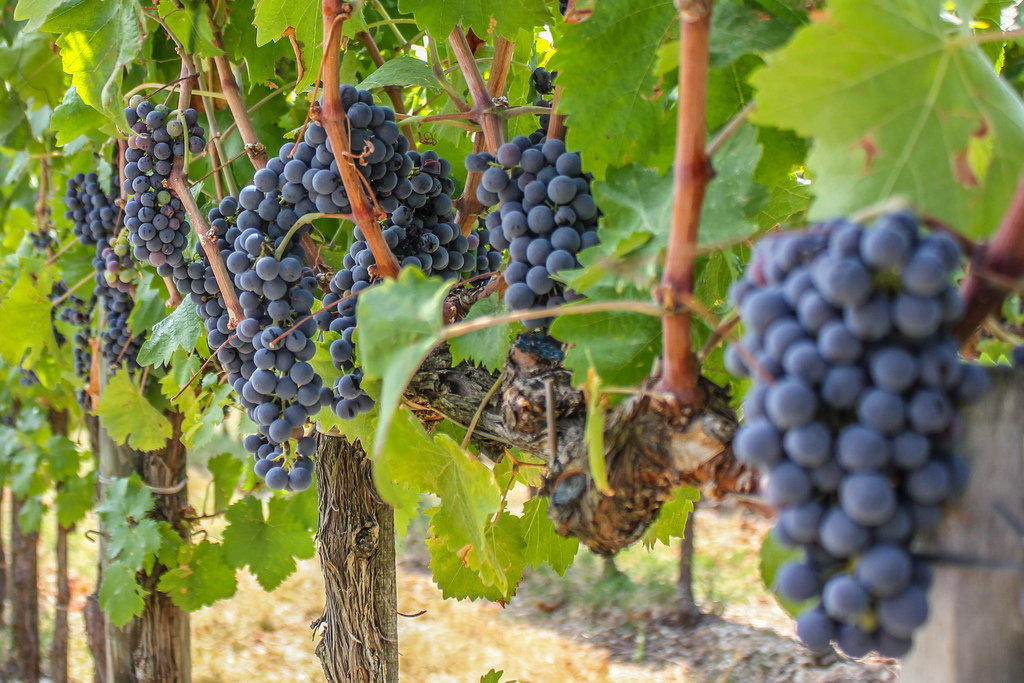 Last Updated on
Last Updated on Grapes are smooth-skinned, fleshy berries from the woody, perennial, deciduous vines of the botanical genus Vitis and family Vitaceae. They exist in a wide variety of forms, flavors and textures, with different species targeted to different uses. Most of the fresh grapes that we buy at the supermarket are derived from cultivars of the European grapevine Vitis vinifera. However there are several other popular species such as Vitis labrusca (eaten fresh or used to make grape juice in North America), Vitis amurensis (native to the Asian continent), Vitis riparia (a wild vine of North America whose fruits are used to make wine and jam) and Vitis rotundifolia (native to the Southeastern United States, and also used for wine and jam making).
Grapes have played an increasingly influential role in human society ever since they were first cultivated during the Neolithic era 6000-8000 years ago. Archaeological evidence dating back to 8000 BC points to the country of Georgia as being the earliest dominant center of wine production in the world. In fact, a comprehensive gene-mapping project tracking the heritage of over 110 modern day grape cultivars revealed that the origin of the grapes definitely lies somewhere in Georgia. However, despite the early dominance of the Georgians, the practice of viticulture soon began to spread. By 4000 BC, vine growing extended from Transcaucasia to Asia Minor, and spread through the Fertile Crescent all the way to the Nile Delta. Migrating Hittites brought grape cultivation from Asia Minor to Crete, and across the Bosphorus to Thrace in 3000 BC. By means of the ancient Greeks and the Phoenicians, grapevine culture soon extended into Carthage, Sicily, Southern Italy, Spain and France.
Grapes are widely believed to be the most important food crop grown on earth – and with good reason. Roughly 71% of all the grapes produced worldwide are used for wine making, with 27% consumed as fresh fruit and approximately 2% set aside as dried fruit. China (12.67%), Italy (11.40%) and the United States (9.11%) accounted for over a third of the worldwide production of grapes in the year 2010. Spain (11,750 km2), France (8,640 km2) and Italy (8,270 km2) were the top three countries in terms of “area planted” for wine producing grapes, over the same time period.
Fresh grapes are mainly consumed in the countries in which they are grown, with only about 14% exported to other nations. This practice is due to two primary reasons: (1) transportation costs are expensive, and (2) fresh grapes are highly perishable. Nevertheless, grapes remain extremely popular. Fresh grape consumption in Europe and North America combined, represent approximately 5% of all fresh fruit consumption each year.
Though commercially cultivated grapes are typically divided into two categories – table grapes (for eating) and wine grapes (for producing wine) – they can be also used in the production of a wide range of other products. For example, they are used to make raisins, juice, wine, brandy, vinegar, lam, jelly, grape seed oil, grape seed extract and ethanol.
Grapes are also good for our health, and many doctors have been recommending diets that include regular consumption of the fruit and its products. In France, for example, it has come to the attention of the medical world that the locals tend to have a relatively low incidence of coronary heart disease despite maintaining a diet that is relative high in saturated fats. This phenomenon is referred to as the French paradox. It has been suggested that the low incidence of cardiac disease by French nationals might be due to their regular consumption of red wine – a primary product of grapes.
It is evident that grapes are very tasty and nutrient packed fruits and new research continues to shed more light on their health promoting benefits. If you would like to improve your health and your general lifestyle, then the best solution might be no further away than your nearest supermarket.
Reference
http://www.uky.edu/Ag/CDBREC/history&uses.pdf
Image courtesy of il_baro


